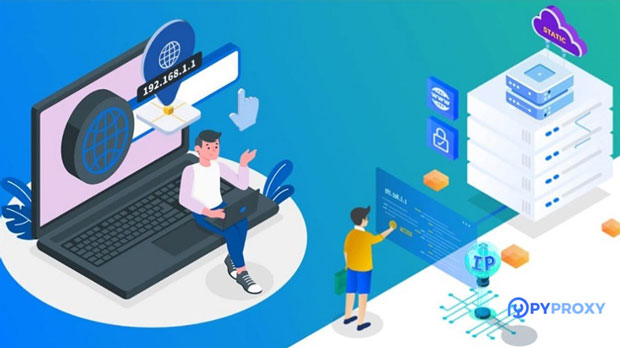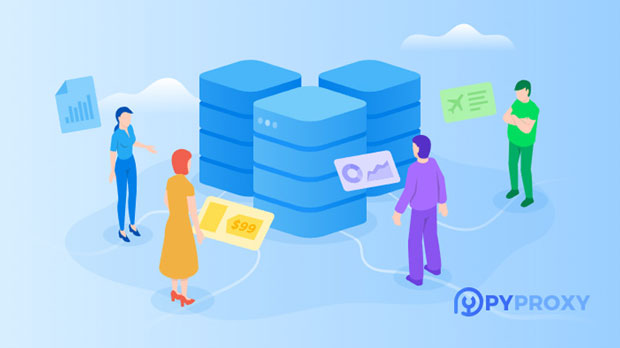In today's digital landscape, choosing the right proxy service provider can significantly affect the online experience, particularly for businesses and individuals seeking privacy, security, and enhanced browsing. Two popular services in this space are PYPROXY and Croxy Pro. The question arises: Is PyProxy’s paid service more cost-effective than Croxy Pro? This article aims to provide a thorough comparison, looking at their pricing models, features, and overall value for money. Understanding the key differences can help users make an informed decision based on their specific needs. 1. Overview of PyProxy and Croxy ProBefore diving into the detailed comparison, it is essential to understand what each service offers and their pricing strategies. PyProxy and Croxy Pro provide proxy services, but their functionalities and target markets may vary. PyProxy is widely recognized for its simple interface and robust security features, whereas Croxy Pro has made a name for itself with its diverse proxy servers and emphasis on bypassing restrictions.2. Pricing Models: What’s More Affordable?A key factor when evaluating any service is its cost. PyProxy and Croxy Pro offer different pricing plans to cater to various users, from individual consumers to large enterprises.PyProxy provides a subscription-based model with flexible pricing tiers. The entry-level plan is budget-friendly, designed for users who need basic functionality. Its higher tiers come with additional features, including faster speeds and more proxy locations, but still remain competitive in pricing compared to many other services in the market. PyProxy’s pricing flexibility is a major plus for those with varying budgets.On the other hand, Croxy Pro offers a tiered pricing system that’s relatively straightforward. However, its higher-end plans are considered to be on the pricier side, especially when compared to other services offering similar functionalities. While Croxy Pro does offer unique features such as dedicated servers and increased bandwidth, the pricing may not provide the best value for smaller users or businesses with limited budgets.3. Features and Performance ComparisonWhen it comes to proxy services, features and performance are as important, if not more important, than the price. Let’s break down how PyProxy and Croxy Pro compare in this regard.3.1 Security and PrivacyPyProxy shines when it comes to security. The service offers strong encryption protocols, including SSL/TLS support, which ensures a secure browsing experience. Additionally, it offers multiple IP rotation options to enhance anonymity, making it an ideal choice for users concerned about privacy and security.Croxy Pro also provides encryption and various privacy features, but its security protocols might not be as robust as those offered by PyProxy. While it certainly serves users well, those who prioritize privacy may find PyProxy’s offerings more appealing.3.2 Speed and ReliabilityWhen comparing the speed and reliability of these services, PyProxy tends to outperform Croxy Pro in terms of speed consistency. PyProxy’s servers are optimized for minimal latency, ensuring faster browsing and more stable connections, even during peak usage times.Croxy Pro, while offering decent speed, may experience occasional lags, especially on the more affordable plans. High-demand users may notice a decrease in speed, which could be a drawback for those requiring consistent performance for work or streaming.3.3 Server Locations and OptionsCroxy Pro takes the lead when it comes to the diversity of proxy servers and locations. With a wide range of global server options, users can easily bypass geographical restrictions, which is a great advantage for those who need to access content from multiple countries.While PyProxy has a more limited selection of servers, it compensates with higher-quality servers that offer better speeds and stability. Users who don’t need to switch locations frequently might find PyProxy’s more refined selection of servers sufficient for their needs.4. User Experience and Customer SupportBoth services offer user-friendly interfaces, but their customer support structures differ.PyProxy provides responsive customer service with live chat support and an extensive knowledge base. This makes it easier for users to get help when needed. The interface is intuitive, which makes it suitable for both beginners and advanced users.Croxy Pro also has a good user interface but tends to have slower response times in its customer support, particularly during high-demand periods. However, its detailed tutorials and FAQs can be helpful for troubleshooting.5. Scalability and Business UseWhen it comes to scalability, both services cater to individual users as well as businesses. However, PyProxy stands out in its ability to provide flexible, scalable solutions for businesses, particularly those that require multiple proxy configurations or integration with existing IT systems. Its pricing structure allows businesses to grow and scale their proxy needs without significant cost increases.Croxy Pro, although it supports businesses, may not provide the same level of scalability as PyProxy. Businesses requiring higher bandwidth or customized proxy solutions may find PyProxy’s tailored plans more beneficial in the long run.6. Pros and Cons: Which is the Better Deal?Pros of PyProxy:- More cost-effective, especially for budget-conscious users.- Excellent security and privacy features.- Better speeds and reliability.- More flexible pricing and service plans.Cons of PyProxy:- Fewer server locations compared to Croxy Pro.- May not be ideal for users who need to bypass strict geographical restrictions frequently.Pros of Croxy Pro:- Wider range of server locations, ideal for users needing global access.- Suitable for users who require advanced proxy features.Cons of Croxy Pro:- Higher pricing, especially for premium plans.- Occasional speed issues on the lower tiers.- Customer support can be slow.7. Conclusion: Is PyProxy the More Cost-Effective Option?When it comes to cost-effectiveness, PyProxy stands out as the more affordable option, offering robust features, excellent performance, and flexible pricing. For individuals or businesses seeking a reliable proxy service without breaking the bank, PyProxy provides significant value for money.On the other hand, Croxy Pro may be a better choice for users who require a broader range of server locations and are willing to pay a premium for those features. However, considering the pricing disparities and the performance advantages of PyProxy, it’s clear that PyProxy offers better overall cost-effectiveness, especially for users who prioritize security, speed, and affordability.ConclusionOverall, PyProxy’s paid services offer better value for money compared to Croxy Pro, making it a more cost-effective choice for those who prioritize affordability, security, and speed.
Aug 11, 2025



































































